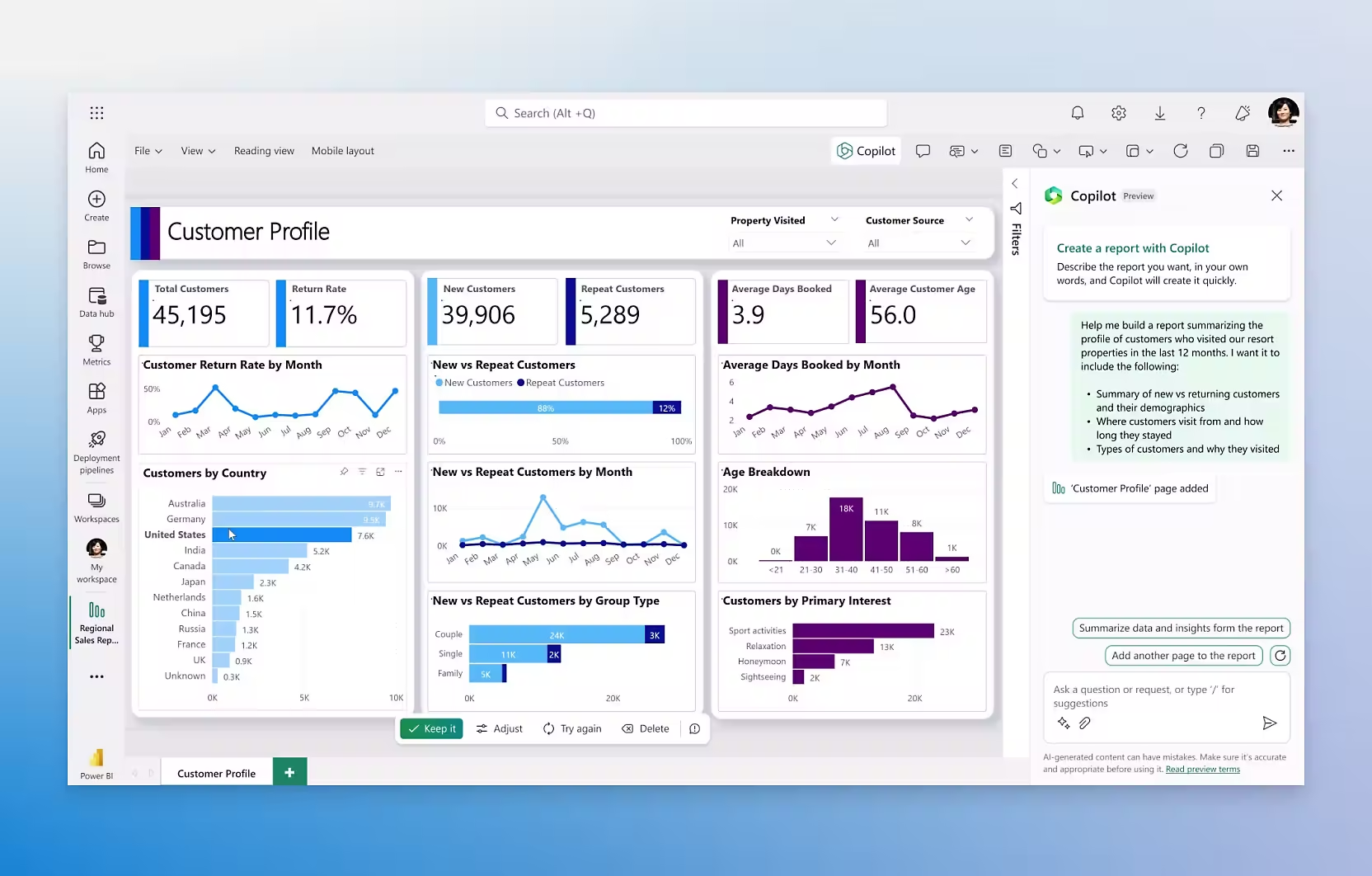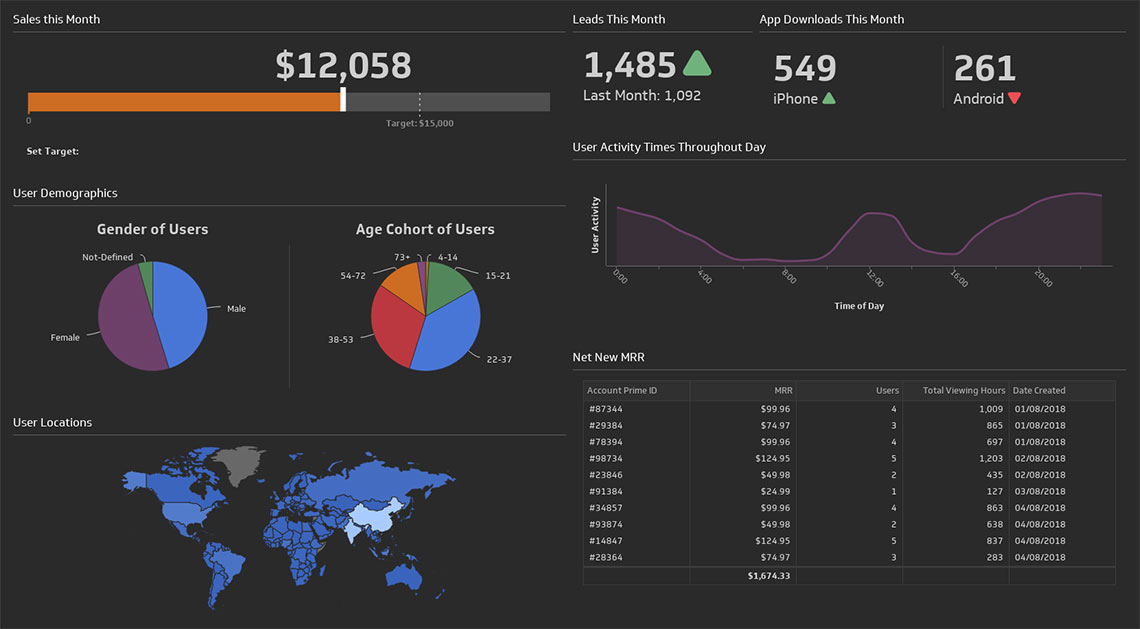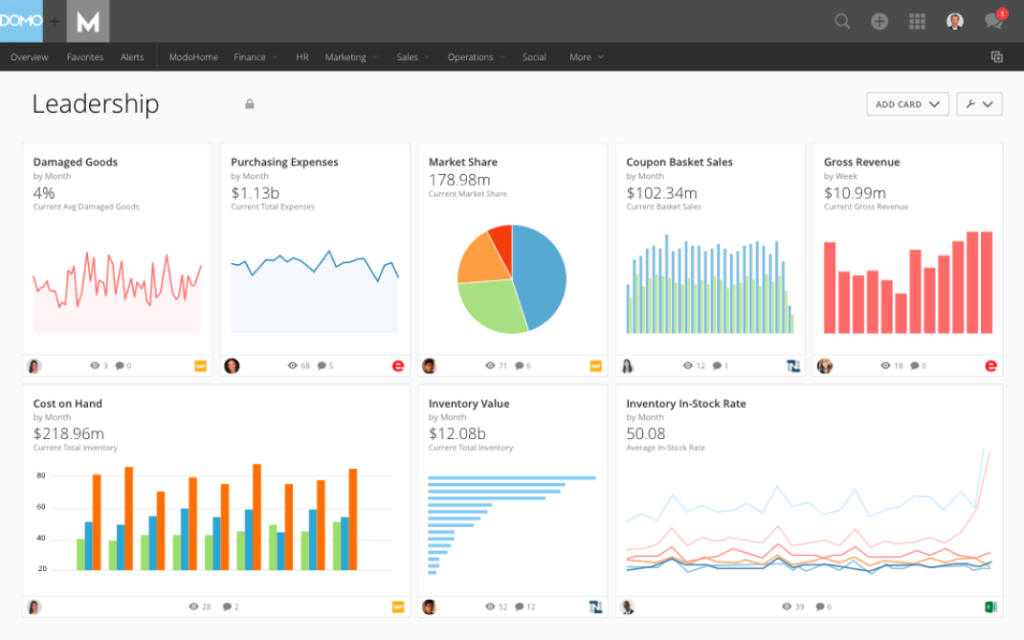KPI stands for “key performance indicator” – aka how well are you doing against the metrics that are most important to your business. There may be several KPI definitions when it comes to the specific indicator measured, but overall, KPIs must be measures that indicate overall business performance.
For a restaurant, the KPI could be reservations, meals ordered, or total sales volume. For an individual in a corporate sales structure, the KPI could be cold calls, MRR, or ARR generated.
Defining KPI for Your Business
KPIs are essential in providing organizations with valuable insights into how well they are performing and if they are on track to achieve their desired outcomes in project management especially.
As we noted above, these indicators can vary across different industries and businesses, depending on their goals and priorities. Common KPIs include metrics related to sales, revenue, customer satisfaction, employee performance, operational efficiency, and more.
If you’re looking to set KPIs for your team, we’d recommend starting at the lowest common denominator – is there something that everyone collectively is responsible for? One thing that people can rally behind? If we’re using a fast casual restaurant example, the answer would likely be meals sold.
Other KPI examples:
1. Customer retention rate – a key performance indicator for companies like Apple, measuring the percentage of customers who continue to purchase Apple products and services over a specific period of time.
2. Revenue growth – a key performance indicator for companies like Amazon, tracking the increase in revenue generated from sales and services over time. This requires measuring daily, weekly, or monthly revenue and plotting changes over time.
3. Employee productivity – a key performance indicator for companies like Google, measuring the efficiency and output of employees in terms of projects completed, tasks accomplished, and overall performance. This would require things like task completion ratios, employee satisfaction surveys, and manager reviews.
4. Website traffic – a key performance indicator for companies like Facebook, monitoring the number of visitors and user engagement on their website, app, or platform. This is strictly based on visitors to site, so it’s easy to track and reference over time.
By setting and monitoring KPIs, companies can make informed decisions, identify areas for improvement, and drive overall business success.
How KPI Metrics Power Success
KPIs help businesses stay focused on their strategic goals and ensure that efforts and resources are aligned with these objectives. They provide a way to measure progress towards key targets and enable management to make data-driven decisions. They also help in identifying trends, patterns, and areas of concern that may need to be addressed promptly.

By setting realistic KPIs and regularly monitoring them, businesses can stay focused on their strategic objectives and make necessary adjustments to achieve their desired outcomes. Ultimately, these goals serve as a powerful tool in empowering organizations to drive success and alignment, and bring teams or groups of people together with common goals.
Best Tools Tracking & KPI Dashboards
As you start to lay out the KPIs for your team, you want to hold up your end of the bargain by tracking and understanding progress of these KPI data points over time. That’s why it’s always best to have a tool for reporting KPI changes, tracking KPI progress, and more. Here are a few of our favorites:
Hive

Hive is known for being a powerful project management software, but they recently launched their robust Dashboards functionality which is the perfect KPI tracking tool. With dashboards, users can bring in stats from inside Hive, i.e. tasks completed, actions outstanding, average time spent on a project, goal progress, and more in ONE central dashboard.
In terms of time savings, Hive has you covered – you can do everything, from team communications to PM, in the same place. And use that data to make informed decisions about your goals and track trends over time.
Want to try Hive? Here’s a 14 day free trial.
Tableau

Tableau is a powerful data visualization tool that allows users to create dynamic and interactive dashboards. Its user-friendly interface makes it easy to connect to various data sources and customize dashboards to suit specific business needs.
With its advanced analytics features and drag-and-drop functionality, Tableau is a popular choice for organizations looking to visualize and track key performance indicators effectively.
Power BI

Power BI is a cloud-based business intelligence tool that enables users to create visually appealing dashboards with real-time data updates. Its intuitive interface allows for easy data exploration and customization, making it accessible for users of all skill levels.
Power BI also offers advanced data modeling capabilities and integrates seamlessly with other Microsoft products, making it a versatile tool for creating insightful dashboards.
Klipfolio

Klipfolio is a cloud-based dashboard platform that specializes in creating dashboards for businesses of all sizes. Its wide range of data connectors and visualization options make it easy to track key performance indicators from multiple sources in one centralized dashboard.
Klipfolio also offers advanced features such as data blending, formulas, and data alerts, allowing users to create highly customized and actionable dashboards to drive business decisions.
Domo

Domo is a cloud-based business intelligence platform that provides users with the tools to create visually appealing and interactive dashboards. Its drag-and-drop interface, extensive data connectors, and pre-built templates make it easy to design and customize dashboards to track key metrics in real-time.
Domo also offers advanced features such as predictive analytics, data sharing, and collaboration tools, making it a comprehensive solution for organizations looking to create impactful dashboards.
Setting Up KPI Tracking
Once you’ve chosen your preferrer KPI tool, gotten your primary goals laid out, what’s next? Whether it’s a sales KPI, social media KPI, or something totally different, you need to stay on track when it comes to reporting and data management. Without your team contributing to proper reporting and tracking, the power of the tool isn’t going to matter
You Need Team Buy-In
Proper and accurate data collection is crucial when tracking Key Performance Indicators in any organization. As we’ve discussed, these are absolutely essential metrics that help businesses evaluate their progress towards specific goals and objectives. Without accurate data, organizations cannot make informed decisions, set realistic targets, or measure their overall performance effectively.
Accurate data collection ensures that the KPIs being tracked provide a true reflection of the organization’s performance. If the data collected is inaccurate or incomplete, it can lead to misleading results and the organization may end up making decisions based on faulty information. This can have serious consequences for the business, impacting its ability to achieve its strategic objectives and hindering its overall success.
Proper data collection also ensures that KPIs are consistent and standardized across the organization. It allows for a comparison of performance across different departments or teams, enabling leaders to identify areas for improvement and allocate resources effectively.
Accurate data collection is also essential for benchmarking against industry standards and competitors, providing valuable insights into the organization’s position in the market. By investing in accurate data collection processes, organizations can enhance their performance measurement and drive continuous improvement.
How To Encourage Team KPI Tracking
If you’re struggling to get your team aligned with KPI tracking, here are a few strategies for ensuring buy-in across the organization.
1. Clearly communicate their importance:
Team members need to understand why tracking these metrics is essential for achieving the team’s goals and objectives. Clearly explain how they are connected to the overall success of the team and how they can help in measuring progress and identifying areas for improvement.
2. Set specific and actionable performance indicators
Ensure that they’re are relevant, measurable, and achievable. Work with team members to establish goals that are aligned with the team’s objectives and that can be easily tracked and monitored.
3. Provide training and resources
Offer training and resources to help team members understand how to track data effectively. Provide guidelines, templates, and tools that can assist in monitoring and analyzing data.
4. Recognize and reward progress
Acknowledge and celebrate team members who are successful in tracking these key performance indicators and achieving their targets. Consider implementing rewards or incentives for those who consistently meet or exceed their KPIs.
5. Regularly review and discuss KPIs
Schedule regular meetings to review progress and discuss any challenges or obstacles that may be hindering achievement. Encourage open communication and collaboration to address issues and make necessary adjustments to improve tracking.
In Conclusion
Overall, KPIs play a vital role in the success and growth of any organization. These key performance indicators help to track the progress towards achieving business objectives, identify areas that need improvement, and make informed decisions based on data rather than assumptions.
By regularly monitoring KPIs, businesses can measure their performance, optimize their processes, and stay competitive in today’s dynamic market. It is essential for companies to establish clear, relevant, and measurable KPIs that align with their strategic goals. Ultimately, having a solid system in place for tracking KPIs can drive efficiency, accountability, and overall success within an organization.

